ARTICLE AD BOX
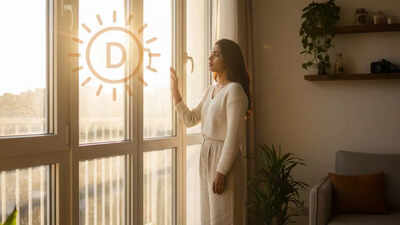
Image Credit: Generated using AI Tool
India gets abundant sunlight, yet nearly 9 in 10 people are Vitamin D deficient. Indoor life, sunscreen use, and pollution are blocking our “sunshine vitamin,” quietly affecting mood, bones, and immunity.You’d think sunshine would keep us healthy. But modern routines have turned India into a country of indoor dwellers. From glass-walled offices to SPF-filled skincare, we’re unknowingly cutting ourselves off from the one vitamin nature made easiest to get - Vitamin D.
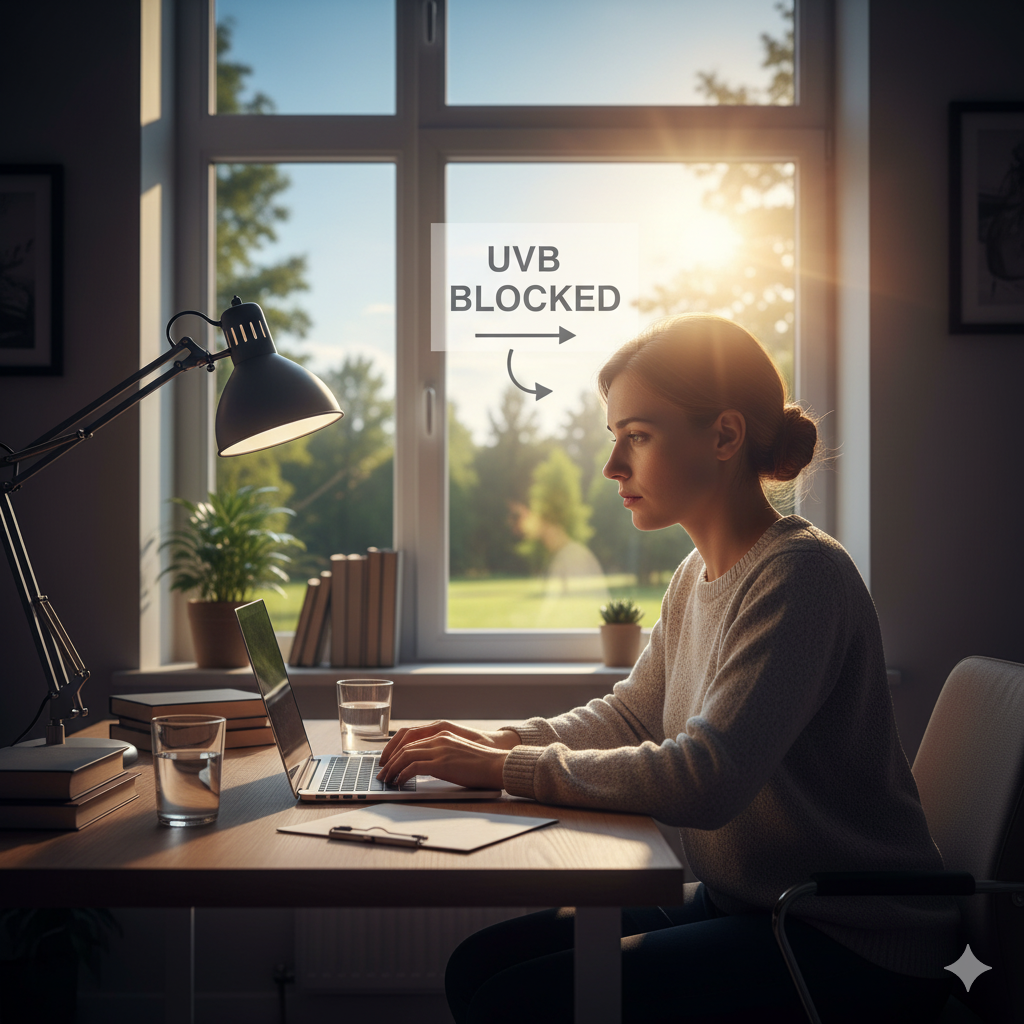
The sunshine paradox
It sounds ironic, but studies show that 70–90 percent of Indians have low Vitamin D levels, according to the Indian Council of Medical Research (ICMR). Doctors now call it one of the biggest nutrient deficiencies of our time.Vitamin D works more like a hormone than a vitamin. It helps the body absorb calcium, strengthens bones, and supports immunity and brain health. When levels fall, fatigue, low mood, muscle pain, and frequent illness often follow.
Why we’re running low despite the sun
- Indoor lives: Most urban Indians spend daylight hours inside offices, classrooms, or gyms. Glass windows block almost all UVB rays — the light our skin needs to make Vitamin D.
- Sunscreen and clothing: Dermatologists still recommend sunscreen for skin protection, but SPF 30 can block up to 95 percent of UVB exposure. Covered clothing and air pollution worsen the gap.
- Air pollution: A study in the Journal of Photochemistry and Photobiology B found that high PM 2.5 levels can cut UVB radiation reaching the skin by more than 60 percent in Indian metros.
- Skin tone factor: Melanin, the pigment that gives darker skin its color, naturally filters UV rays. That means Indians need roughly three to five times more sun exposure than people with lighter skin to produce the same amount of Vitamin D.
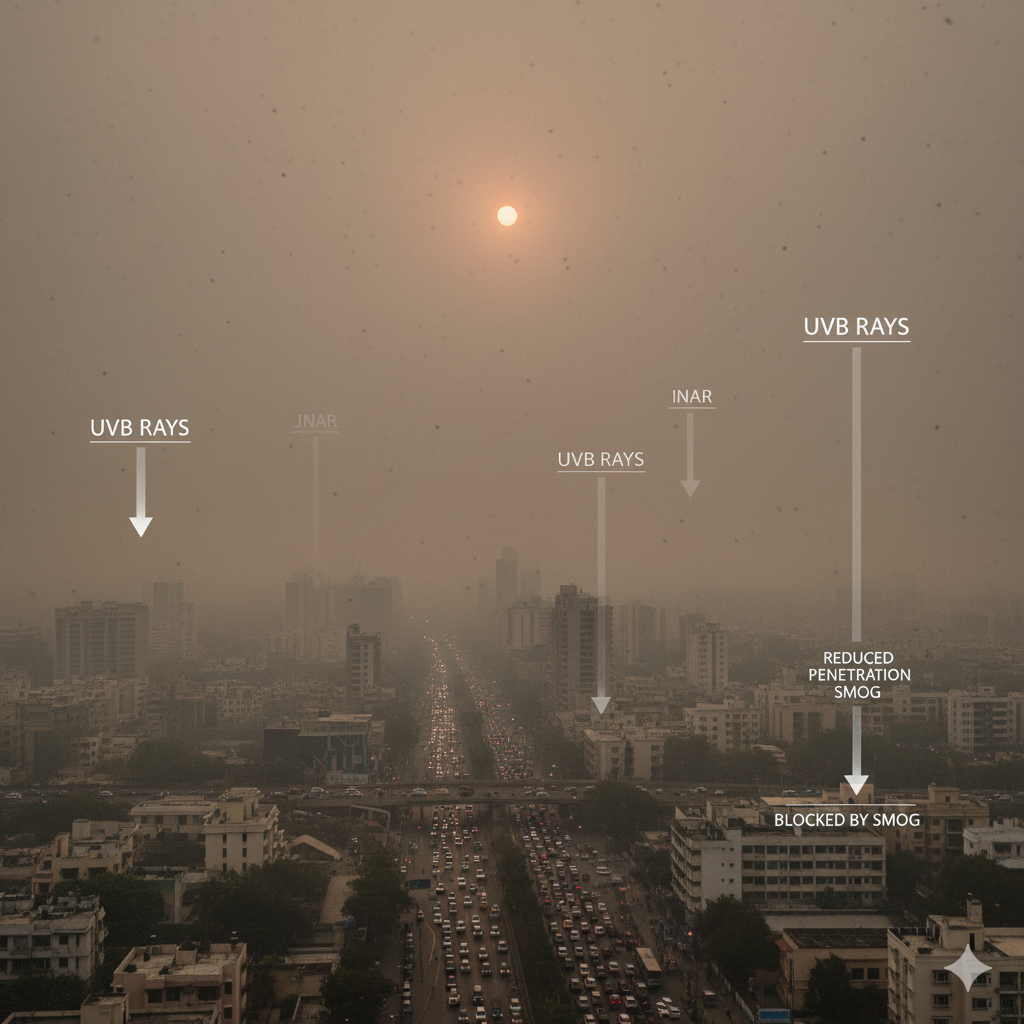
Dr Gagan Gunjan of the emergency department with the Rajendra Institute of Medical Sciences (Rims), said, “Limited sunlight exposure increases the risk of deficiency, often without patients realising it.
Simple lifestyle changes, including daily sunlight exposure, a balanced diet, and supplements as needed, can help. Five out of every 10 patients, who arrive at the hospital on a daily basis, are diagnosed with Vitamin D deficiency.
”
The hidden impact on health
Low Vitamin D doesn’t just weaken bones. It’s been linked to low immunity, mood disorders, and chronic diseases such as heart problems and diabetes.A review by the National Institutes of Health (NIH) notes that Vitamin D receptors are present in nearly every cell of the body, influencing how genes function.
When these receptors stay under-activated, inflammation rises, muscles weaken, and mood-regulating brain chemicals drop.Doctors often report that patients complaining of tiredness, body aches, or back pain feel better once Vitamin D levels return to normal. Some studies also suggest adequate Vitamin D may reduce the risk of respiratory infections, including flu and pneumonia (NIH source).Consultant orthopaedist at Bhagwan Mahavir Manipal Hospitals, Dr Abhinav Mishra, said, “We have seen a surge in patients with Vitamin D deficiency over the past few years.
Many arrive with symptoms like persistent body ache, joint pain, or muscle pain.”
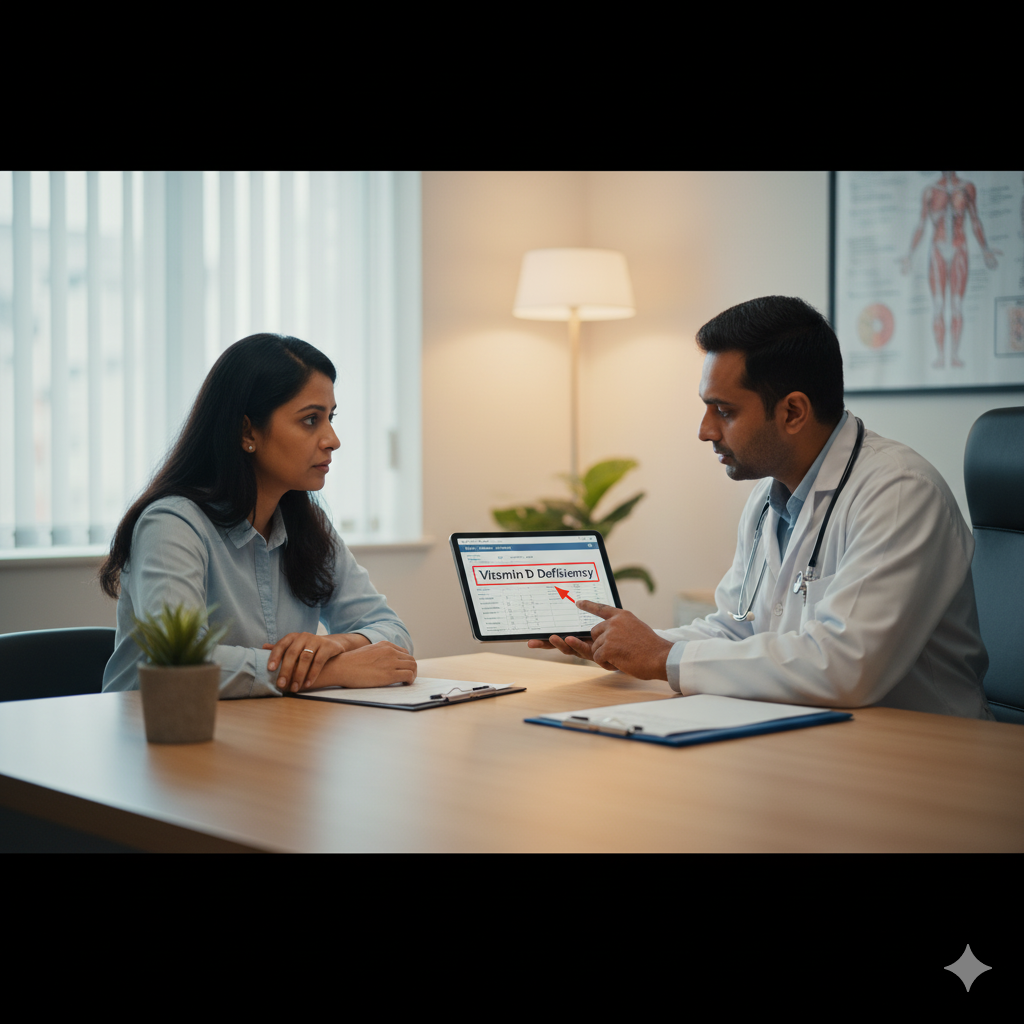
How much sunlight is enough?
Experts recommend about 15–20 minutes of direct sunlight between 10 a.m. and 1 p.m., on arms and legs, at least three times a week. Early-morning or evening light doesn’t provide enough UVB.Still, location, season, and air quality affect how much Vitamin D you actually make. For many people, sunlight alone may not be enough, especially during winter or monsoon months.
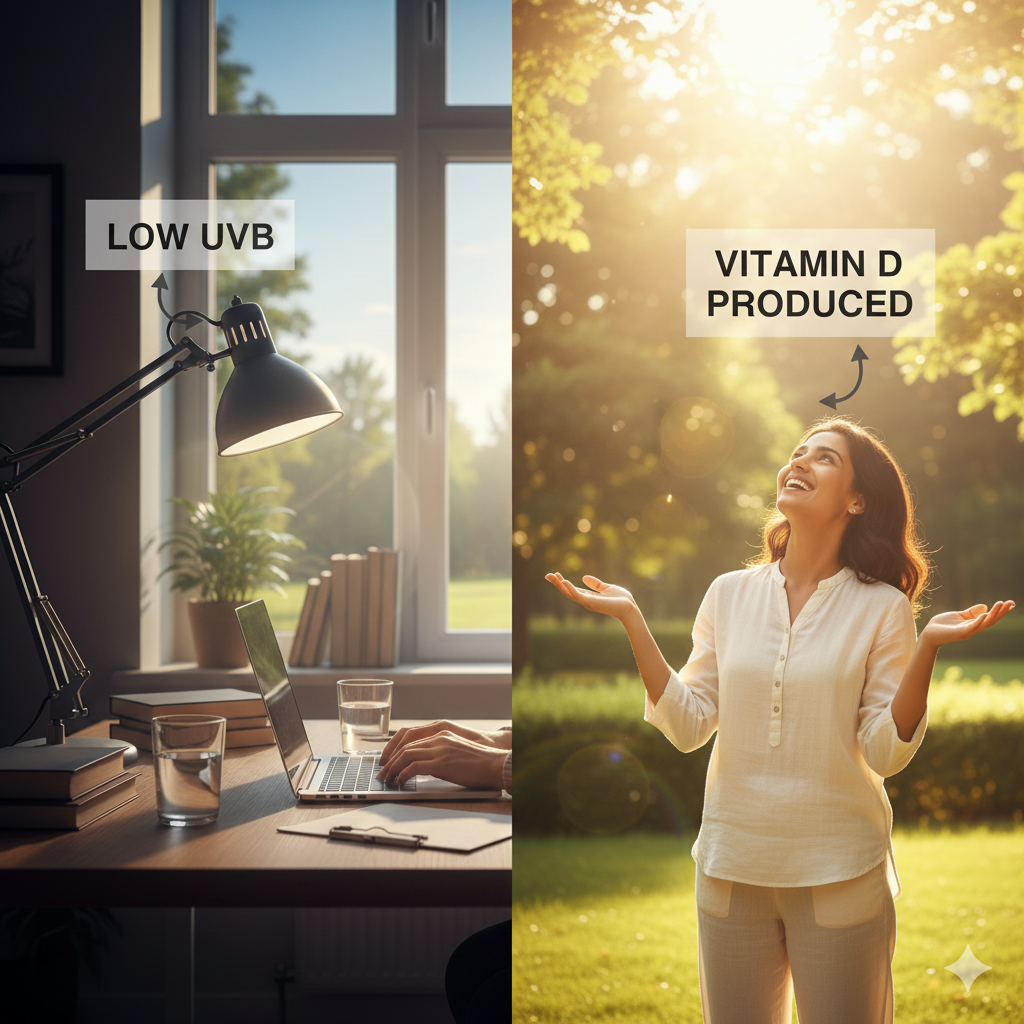
Getting Vitamin D from food
| Food | Vitamin D (IU per 100 g) |
| Salmon | 526 IU |
| Egg yolk | 87 IU |
| Fortified milk | 40–100 IU |
| Mushrooms (UV-exposed) | 400 IU |
| Ghee / butter | 35 IU |
Fortified foods such as milk, breakfast cereals, and edible oils are now promoted by the Food Safety and Standards Authority of India (FSSAI) under its food-fortification programme.
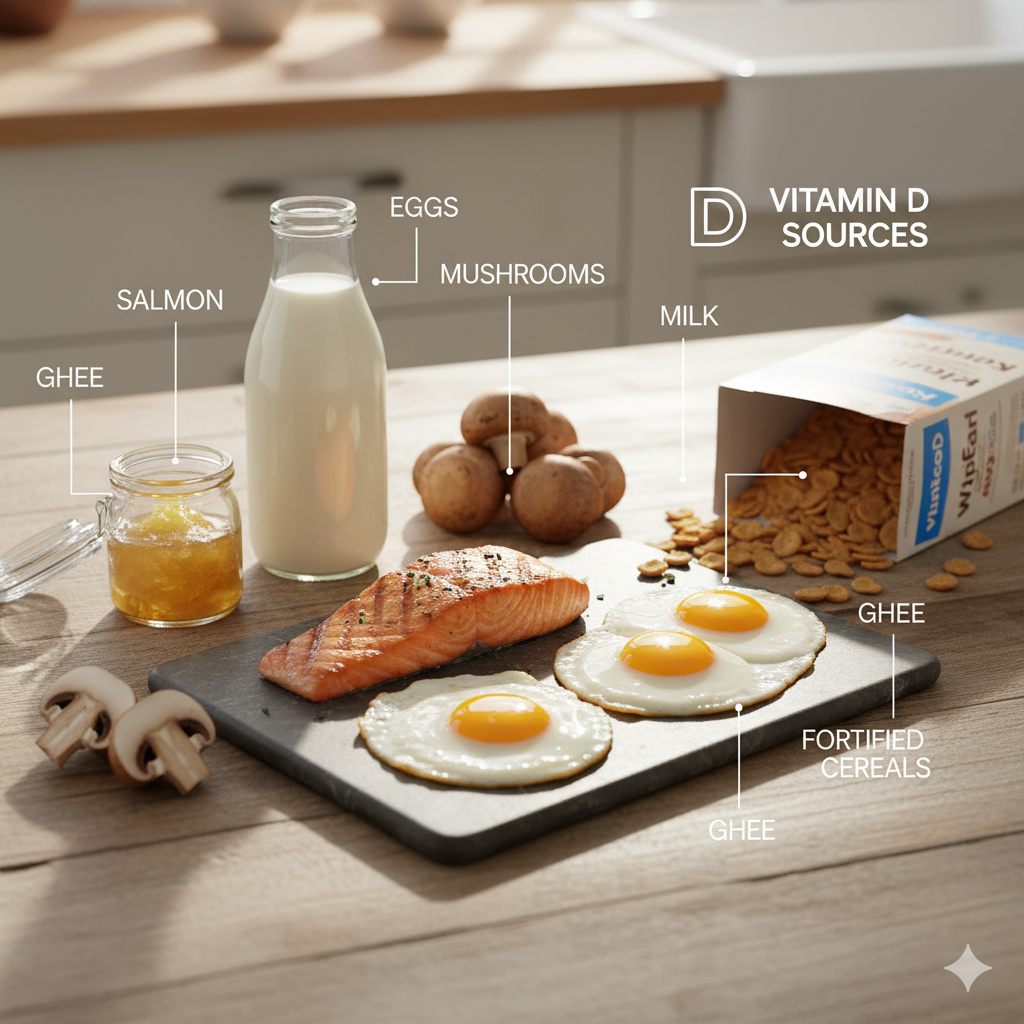
Do you need supplements?
If a blood test shows Vitamin D levels below 20 ng/mL, doctors usually begin with short-term high-dose supplements, followed by maintenance doses.The ICMR-NIN 2021 guidelines recommend 600–800 IU per day for adults. Needs may rise for older adults, obese individuals, or those with limited sun exposure.Taking Vitamin D with healthy fats such as nuts, seeds, or avocado improves absorption. Avoid self-prescribing high doses; excessive intake can raise calcium to unsafe levels and cause nausea or kidney issues (NIH Health Professional Sheet).
Signs you might be deficient
- Constant fatigue or body ache
- Bone pain or frequent fractures
- Hair loss or low mood
- Repeated colds or infections
- Poor sleep
These symptoms are subtle. A simple 25-hydroxy Vitamin D blood test is the only reliable check.Vice-president of the Indian Medical Association, Dr Abhishek K Ramadhin, said, “Around 40% of the people we see daily suffer from vitamin deficiencies. Symptoms are often subtle and can be misdiagnosed. Excessive use of antibiotics can also lead to Vitamin B12 deficiencies as antibiotics affect the gut bacteria responsible for producing this vitamin.”
What it means for you
Vitamin D is the easiest nutrient to make and the one most of us miss. Modern life keeps us indoors, away from the free source our body depends on.A few minutes of mindful sunlight, a plate of fortified food, and a yearly blood test can correct what many medicines cannot. For stronger bones, better energy, and a calmer mind, it’s time India reclaims its sunshine.

 3 hours ago
4
3 hours ago
4








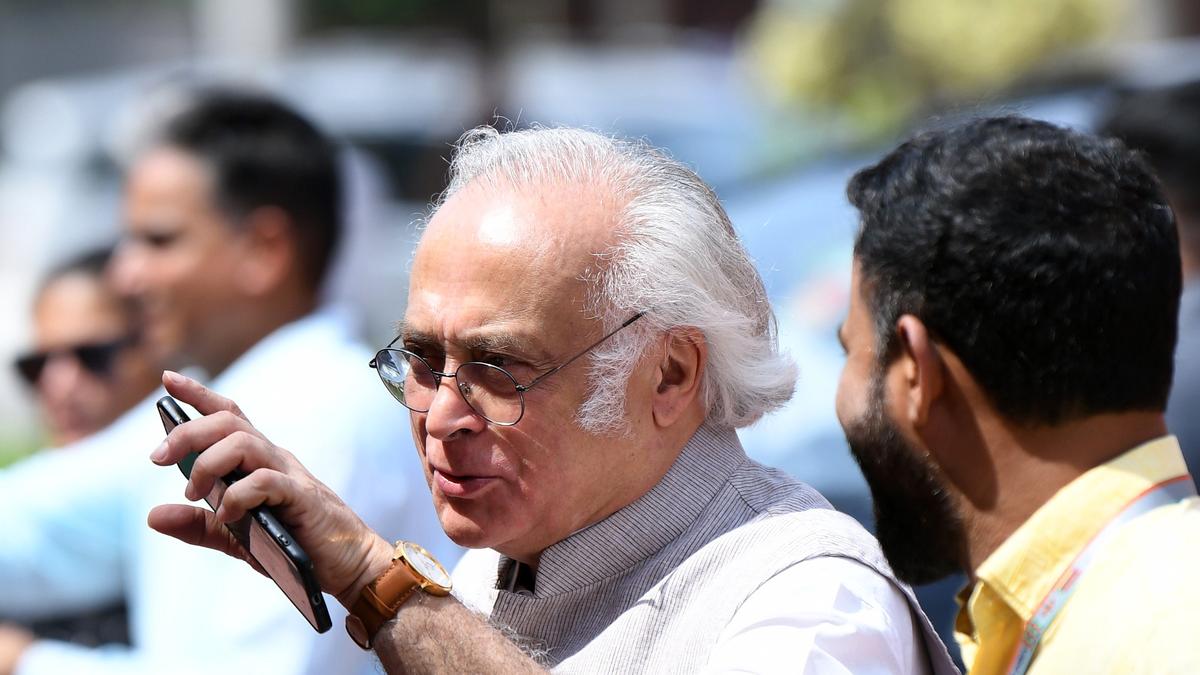
 English (US) ·
English (US) ·